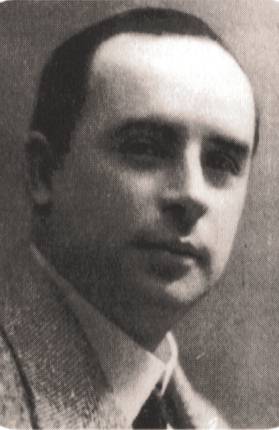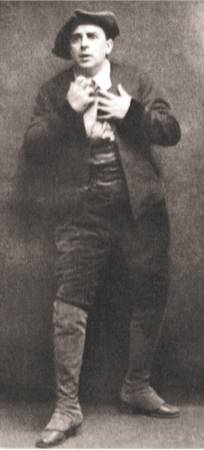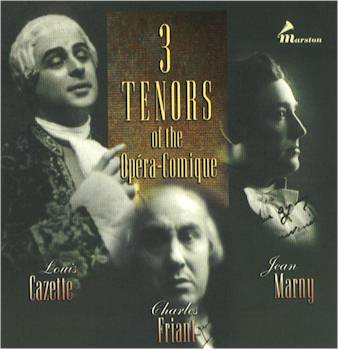French tenor, 1887 - 1922
Biographical notes:
He was born Victor Louis Camille Peault in Nantes. His family moved to Paris when he was quite young and received an early musical training in Paris. He enlisted in the army (cavalry) but
pursued his musical studies. He entered the Paris Conservatory in 1912 where he received vocal tuition by Emile Engel (a former pupil of Duprez) and Albert Saléza. His last teacher was the
Dutch bass Jan Reder. He claimed three prizes in 1914 and after his graduation he was contracted by the Opéra-Comique. Worldwar I broke out and he had to serve in the army. Upon
demobilization in 1919, he was almost immediately called to the Opéra-Comique, where he made his debut on June 14, 1919, as Le Noctambule in Charpentier’s Louise. The first major role there
was that of Pinkerton in Madame Butterfly. In early 1920, Cazette sang small roles in operatic premieres, opposite Vanni-Marcoux and other famous singers. At the time competition among the
tenors was rather high. Léon Beyle, David Devriès, Léon David, René Lapelletrie and Emile Marcelin appeared at the Opéra-Comique! His first great success was in Così fan tutte as
Ferrando, conducted by Messager, opposite a cast that included Gabrielle Ritter-Ciampi, Aline Vallandri, Edmée Favart, Hubert Audoin and Félix Vieuille. He added Vincent (Mireille) and
Wilhelm Meister (Mignon) to his repertoire. In 1921 he sang his first Gérald in Lakmé, Yvonne Brothier was his partner. Louis Cazette rarely performed outside Paris. In 1922 he participated a
in a performance of Don Giovanni. Yvonne Gall was Donna Anna, Aline Vallandri was Donna Elvira and Vanni-Marcoux sang the title role. Cazette was the only singer who gained a big success. His
final new role was Des Grieux in which he appeared on March 9, 1922 for the first time. His last performance took place on April 28, 1922, in a performance of Don Giovanni, opposite Suzanne
Balguerie and Vanni-Marcoux. The following afternoon he complained of a stiff neck (torticolis) and explained that he was unable to perform in the following performance of Mireille. The next
day he was dead, aged 34. The offical version of his death was “suffering agony from having contracted tetanus.” According to Cazette’s daughter-in-law, Cazette was accidentally cut by a
trident which was held by one of his colleagues, the baritone André Baugé. The tetanus infection set in and within a few days Cazette was dead.
As Vincent in Gounod’s “Mireille”
Comment: His career lasted only three years. We are fortunate to have some very fine recordings of this fabulous lyric tenor. Only 11 recordings were made but all are treasures. His voice is supple, full of charm and elegance. The beauty of his voice was often compared to that of the great French lyric tenor of the previous generation, Edmond Clément - and I do agree. His complete recordings, French HMV: - Je suis heureuse with Suzanne Brohly (Wilhelm Meister in Mignon / Thomas / 1922) - Ah, que ton âme (Wilhelm Meister in Mignon / Thomas / 1922) - Instant charmant...En fermant les yeux (Des Grieux in Manon / Massenet / 1921) - Je suis seul...Ah, fuyez, douce image (Des Grieux in Manon / Massenet / 1921)
- J’aimais la vieille maison grise (Fortunio / Messager / 1922) - Sérénade (Toselli / 1920) - Le tango du rêve (Malderen / 1920) - Pour un baiser (Tosti / 1920) - Mon coeur est un oiseau fidèle (Maingueneau / 1921) - Dormez, amours (Rousseau / 1920)
All pictures are taken from the booklet of “3 Tenors of the Opéra-Comique”
|
|||||||||||||


